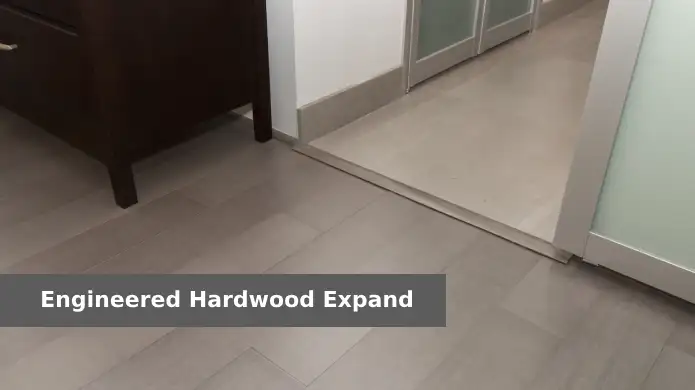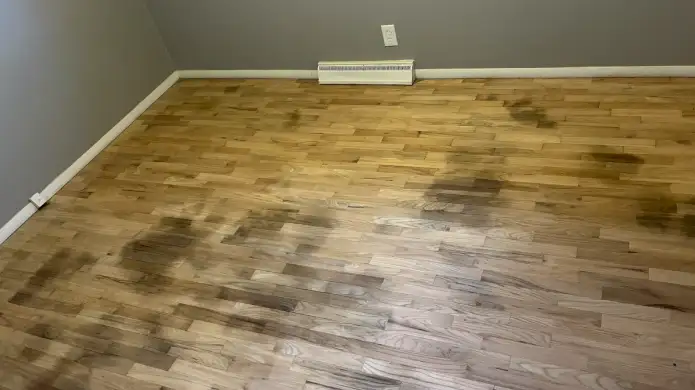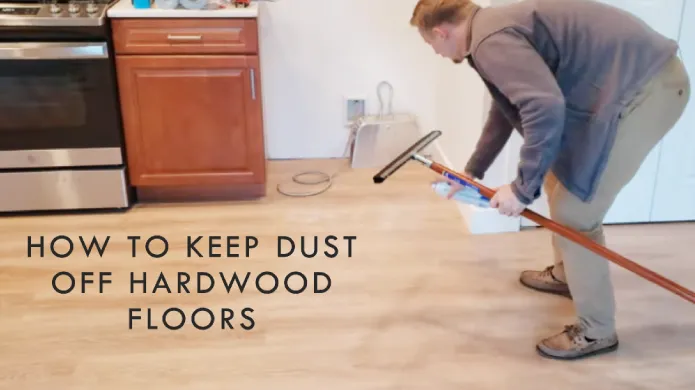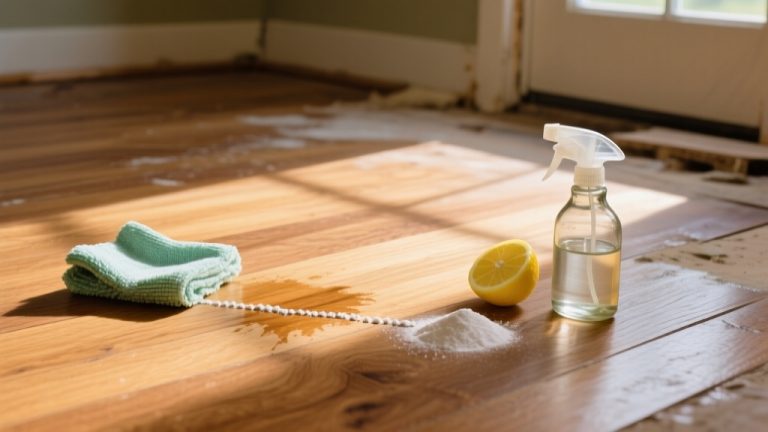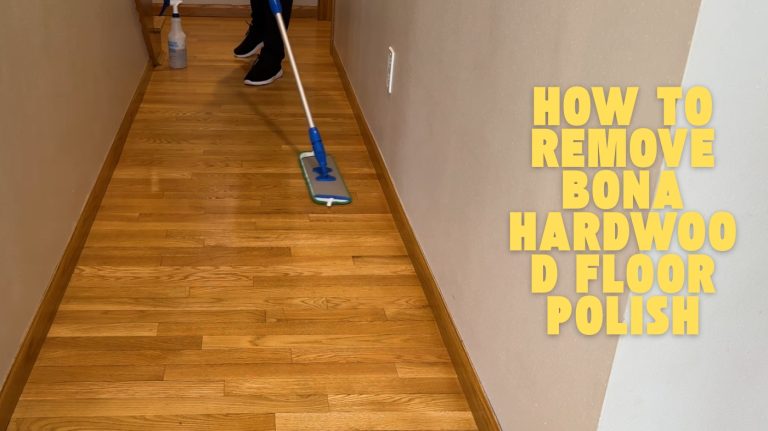Does Engineered Hardwood Expand: 5 Influencing Factors
Are you considering installing engineered hardwood floors in your home or business? It’s important to know if engineered hardwood expands or not.
Engineered hardwood can expand, but the degree of expansion depends on several factors. It’s essential to understand that engineered hardwood is composed of multiple layers of wood that are glued together.
The top layer is a hardwood veneer, while the bottom layers are typically plywood or high-density fiberboard (HDF). The layers are stacked in opposing directions, which gives the flooring stability and resistance to expansion and contraction.
We’ll explore the factors that influence the expansion of engineered hardwood and provide tips for minimizing expansion and fixing gaps in the flooring.
What Factors Influencing Expansion of Engineered Hardwood?

Engineered hardwood’s expansion is influenced by several factors.
- 1. Humidity and Temperature Fluctuations
- 2. Moisture Impact
- 3. Material Quality and Construction
- 4. Installation Practices
- 5. Acclimation
Let’s talk about the factors in detail.
1. Humidity and Temperature Fluctuations
Due to fluctuations in humidity and temperature, engineered hardwood flooring can expand or contract, making it important to maintain a consistent environment.
High humidity levels can cause the wood to absorb moisture and expand, leading to buckling and warping of the floorboards. On the other hand, low humidity levels can cause the wood to lose moisture and shrink, resulting in gaps between the floorboards.
It’s crucial to keep the humidity and temperature levels in check to prevent these issues.
2. Moisture Impact
Moisture can wreak havoc on your engineered hardwood flooring, causing it to swell and buckle if left unaddressed. Even a small amount of moisture can have a significant impact on the flooring, resulting in warping, cupping, or buckling.
This is especially true if the moisture is left to sit for an extended period, as it can seep into the wood and cause irreversible damage.
3. Material Quality and Construction
To ensure your engineered hardwood flooring stays in top condition, you’ll want to choose high-quality materials from reputable manufacturers who adhere to industry standards. The quality of the materials used in the flooring construction can greatly affect its tendency to expand.
Inferior quality or poorly constructed flooring may be more prone to expansion issues, leading to unsightly gaps and other issues. It’s important to note that not all engineered hardwood flooring is created equal.
Some manufacturers may cut corners to save on costs, producing a product that may hold up poorly over time. When selecting your flooring, take the time to research different manufacturers and read reviews from other customers.
This can help you identify the best options and ensure that you’re investing in a product that will look great and function well for years.
4. Installation Practices
If you want your engineered hardwood flooring to stay in good shape, you must fit it tightly and leave an expansion gap between the floorboards since improper installation can cause expansion problems.
When installing engineered hardwood flooring, it’s important to ensure the floorboards are fitted tightly together.
If there are gaps between the boards, it can allow for more significant expansion, leading to issues down the line. To prevent this, make sure that the boards are snugly fitted together during installation.
In addition to fitting the boards tightly together, it’s also important to allow an expansion gap around the perimeter of the room and at vertical surfaces. This gap allows the flooring to naturally expand and contract with changes in temperature and humidity, which can help prevent issues like buckling and warping. Failing to leave this gap can hinder the natural movement of the flooring and lead to problems.
5. Acclimation
Before installing your new engineered hardwood flooring over tile or other surfaces, it’s crucial to acclimate it to the environment and moisture levels of the room to minimize potential problems down the line. Here are some important things to keep in mind when acclimating your new flooring:
- Allow the unopened boxes of flooring to acclimate to the room for at least 48 hours before installation.
- Keep the room at the same temperature and humidity levels that it’ll be during normal use.
Take moisture readings of the subfloor and the flooring before installation to ensure they’re within the manufacturer’s recommended range. If the moisture levels are outside of the recommended range, wait until they’re within range before installing the flooring.
Acclimation of engineered hardwood flooring is essential to prevent expansion or contraction after installation.
How Can You Minimize Expansion on Engineered Hardwood Floors?
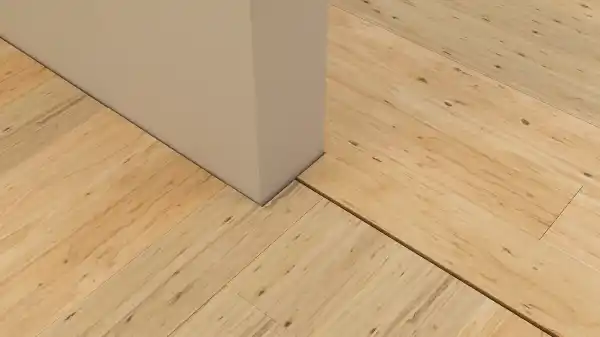
To minimize expansion on your engineered hardwood floors, you need to follow certain guidelines.
1. Proper Acclimation
Ensure your engineered hardwood flooring is properly acclimated to prevent any potential expansion or contraction issues down the road.
Acclimation involves letting the flooring adjust to the room’s temperature and humidity. This process typically takes a few days, but it may take longer depending on the specific product and the environment.
It’s important to follow the manufacturer’s recommendations for acclimation, as failure to do so may void the warranty. Improper acclimation can lead to gaps, buckling, and other issues with your flooring.
To ensure proper acclimation, store the flooring in the room where it will be installed for at least 48 hours prior to installation.
The room should be at a temperature and humidity level similar to what it will be during normal use. During this time, keep the boxes of flooring open and stacked with spacers between each layer to allow for airflow.
2. Maintain Consistent Indoor Humidity
Maintaining consistent indoor humidity levels is crucial for preventing issues with your engineered hardwood flooring.
This includes using a humidifier or dehumidifier as needed. Fluctuations in humidity can cause the wood to expand or contract, which can lead to unsightly gaps or even damage to your flooring.
To avoid these problems, keeping the indoor humidity level within the recommended range for your specific flooring is important.
This range is usually between 35% and 55%. During dry seasons, using a humidifier can help to add moisture to the air, preventing the wood from drying out and shrinking.
On the other hand, during humid seasons, using a dehumidifier or air conditioner can help to remove excess moisture from the air. This can prevent the wood from absorbing too much moisture and swelling.
3. Control Moisture
Now that you know the importance of maintaining consistent indoor humidity, it’s time to focus on controlling moisture to prevent your engineered hardwood from expanding. Excess moisture can seep into the flooring and cause it to swell, buckle, or warp. This can be caused by spills, leaks, high humidity, or even a lack of ventilation.
To prevent these issues, minimizing exposure to excess moisture is essential. This can be done by promptly wiping up spills or any water that comes into contact with the flooring.
Additionally, placing mats or rugs in areas prone to moisture, such as entryways or kitchens, can protect the floor and reduce the likelihood of expansion.
To further control moisture, consider using a dehumidifier or improving ventilation in your home.
| Moisture Control Suggestions | Benefits |
| Promptly wipe up spills | Prevents moisture from seeping into flooring |
| Use mats or rugs in moist areas | Protects floor and reduces likelihood of expansion |
| Use a dehumidifier | Helps control indoor humidity |
| Improve ventilation | Reduces moisture buildup in the home |
4. Regular Maintenance
To keep your flooring looking its best, it’s important to clean and care for it regularly. When it comes to engineered hardwood flooring, maintenance is crucial to prevent expansion and other issues.
You can maintain your engineered hardwood flooring by using manufacturer-approved cleaning products and methods and avoiding excessive use of water during cleaning.
A damp mop or a hardwood floor cleaner specifically designed for engineered wood can help you keep your flooring in top condition.
Regular maintenance can help you avoid costly repairs down the road, and it can also help you preserve the beauty and durability of your flooring.
What is the recommended expansion gap for engineered hardwood flooring?

The expansion gap recommended for engineered hardwood is typically around 8mm (5/16 inch) to ensure it can expand and contract with changes in humidity and temperature.
This gap allows the flooring to move freely without buckling or warping. Without an expansion gap, the flooring could be damaged, leading to costly repairs or replacement.
How do you fix a gap in engineered hardwood floors?
If a gap pops up in your engineered hardwood floors during installation, finding a better-fitting board is like hitting the jackpot; otherwise, filling the gap with a color-matched wood filler is the silver lining.
To fix a gap in engineered hardwood floors, you first need to clean the gap by removing any debris or dust.
Then, apply the color-matched wood filler into the gap, spreading it evenly with a putty knife. Allow the filler to dry completely before sanding it down to a smooth surface.
If the gap is too large to be filled with wood filler, the only solution is to replace the board. This can be done by removing the damaged board and replacing it with a new one that fits better.
It’s important to ensure that the replacement board is the same thickness and color as the surrounding boards to avoid any noticeable differences in the finished floor.
Take Care of Your Engineered Hardwood Floors for Long-Lasting Beauty and Functionality
Engineered hardwood flooring is a great choice for your home due to its durability, affordability, and versatility in design.
However, it’s important to understand that engineered hardwood does have the potential to expand and contract, especially in environments with high humidity or temperature fluctuations.
To minimize expansion, properly acclimate your flooring before installation, maintain a consistent indoor environment, and leave the recommended expansion gap around the perimeter of the room. It’s also important to choose a quality product and have it installed by a professional.
You can keep your floors beautiful and functional for years by taking the necessary precautions and understanding what causes expansion.

